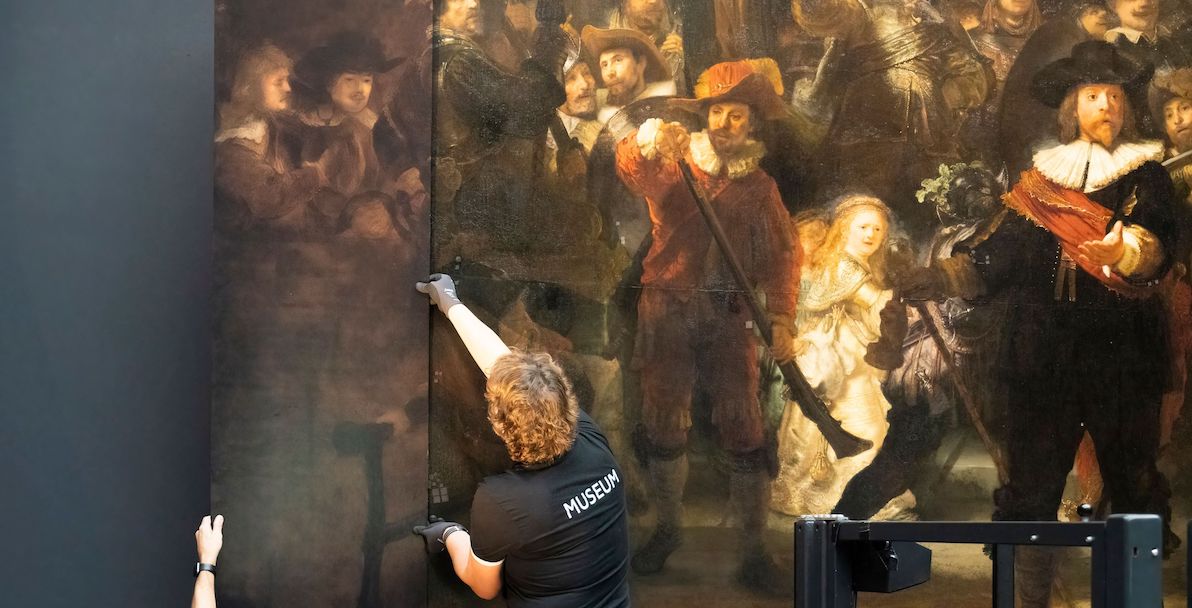Rembrandt’s The Night Watch has been recreated in its original form for the first time in 300 years. Visitors to Rijksmuseum in Amsterdam can now see the reconstructed composition uniting several sections cut from the painting over the centuries.
The Night Watch as it is displayed in the Rijksmuseum is etched into our collective memory – TD
Operation Night Watch team has successfully recreated these missing pieces, which have been mounted around Rembrandt’s world-famous work. This reconstruction based on the 17th-century copy attributed to Gerrit Lundens was made with the help of artificial intelligence.
The result is a significant component in the art historical research conducted as part of Operation Night Watch. The reconstructed painting will remain on public display at the Rijksmuseum for the coming months. Anyone who is unable to visit the museum due to the ongoing restrictions can view the reconstruction on the Rijksmuseum website, along with supplementary information.

Taco Dibbits, director of the Rijksmuseum: The Night Watch as it is displayed in the Rijksmuseum is etched into our collective memory. Thanks to this reconstruction, we can now see that the composition as it was painted by Rembrandt was even more dynamic. It is wonderful to be able to now see with our own eyes The Night Watch as Rembrandt intended it to be seen.
There are a number of differences between The Night Watch as we know it today and the painting in its original form. On the left of the reconstructed version, for example, we can now see three figures on a bridge: two militiamen and a young boy. And the painting’s main figures, Captain Frans Banninck Cocq and Lieutenant Willem van Ruytenburch, are now positioned to the right of centre, rather than in the middle of the canvas. These factors add a considerable sense of movement and dynamism to the painting. It is now also clearer that the powder boy in the left foreground is grasping a balustrade. The boy has furthermore gained space into which he can move, with the result that he seems more clearly to be running away, ahead of the militia. The helmet worn by the militiaman on the extreme right is now complete, and there is space above the standard, making the motion of the ensign as he raises the company’s colours more convincing.
The reconstruction of The Night Watch is an important component of the art-historical research conducted as part of Operation Night Watch. By reconstructing the missing sections, printing them on panels, and temporarily placing them around the original painting, researchers can now experience the effect of the painting in its original form. Operation Night Watch is the largest and most wide-ranging research project ever conducted into Rembrandt’s masterpiece. The research began in summer 2019, and conservation work will only commence following the completion of this phase.

